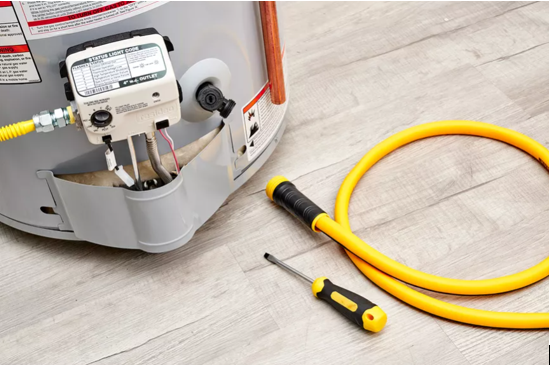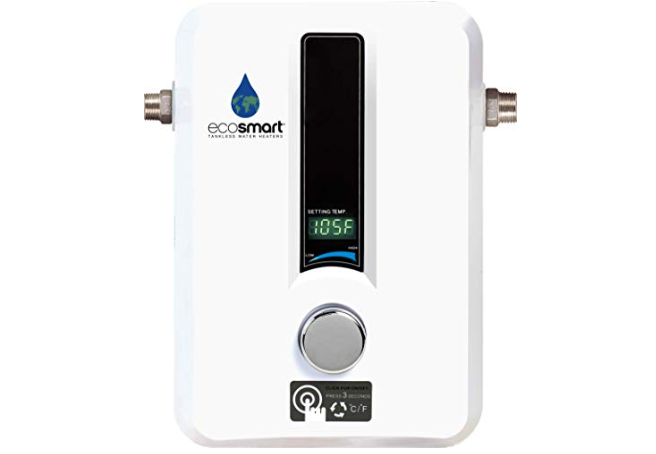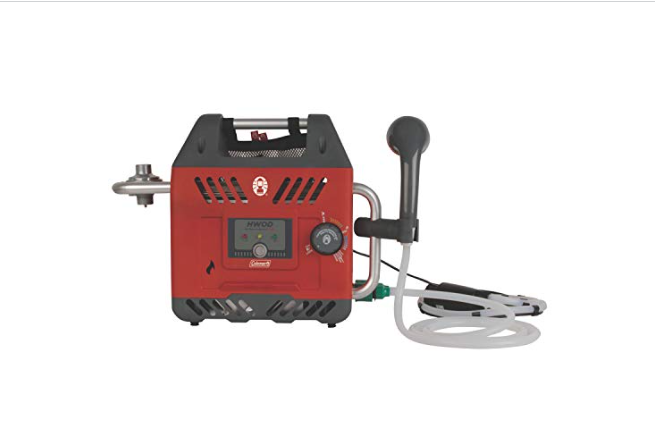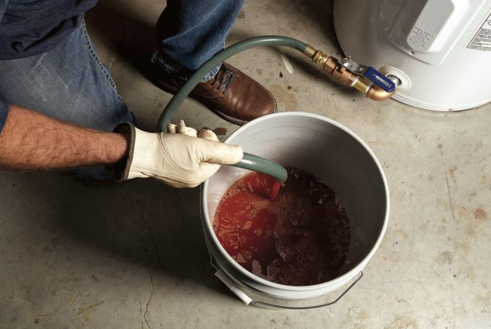If you want your water heater to survive a long time and not break down immediately, it’s crucial to flush it frequently because this significantly impacts its lifespan and operation. Here are a few reasons for what happens if you don’t flush your water heater or hire someone to do it on your behalf if you’re unsure of what will happen if you don’t.
Why Would I Flush A Water Heater?
You can clean up the system by flushing all the water from the heater. This is a crucial part of routine water heater maintenance since it clears the heater’s tank of extra debris and silt. The identical sediment particles might accumulate in the system and lead to a breakdown or malfunctioning of your water heater.
Flushing Removes Sediment Accumulation in a Water Heater
Water is relatively hard in Atlanta and the suburbs that surround it. That indicates that there are some minerals dissolved in the water. The minerals sink to the bottom of your water heater tank when that water fills it since they are heavier than water. This may lead to a few issues. Sediment accumulation in a water heater tank can:
1 – Reduce the Effectiveness of the Water Heater
It heated the water in your water heater from the tank’s bottom-up. The coating of silt that accumulates can make it harder for the heat to move to your water, lowering the energy efficiency of your water heater and costing you money.
2 – Damage to the Home and Other Water Heaters
Your water heater may deteriorate more quickly if it is not routinely cleaned. The pressure and relief valve may also become clogged or blocked by the silt (which helps keep your water heater from exploding).
3 – Reduce the Hot Water Capacity of the Tank
Unbelievably, over time, enough silt can accumulate to lower the capacity of your water heater tank, leaving you with cold showers.
What Happens If You Don’t Flush The Water Heater?
Read this article on the flush water heater to see what happens if you don’t flush your water heater. Water contains various minerals, as we all know—a “hardness” to the water results from some locations’ water having more minerals than others. It divided the country into parts with moderate and severe levels of hardness. The minerals accumulate at the bottom of the water heater tank because they are heavier than water. Sedimentation occurs because these minerals accumulate.
Sediment buildup worsens with time, causing issues with the water heater. In the water heater tank, sediment can clog the valves and start corrosion, resulting in leaks and other problems. Both of these issues reduce productivity and may require expensive repairs. The water heater’s capacity reduces as sediment deposits grow because the mineral sediment occupies more and more space inside the tank, another problem associated with sediment. As a result, when the water heater is not flushed, the built-up sediment hinders and even harms the heater’s functionality and your plumbing system.
So When Your Water Heater Should Be Flushed?
It’s likely that right now would be an excellent time to get your water heater flushed out if you’re wondering what happens if you don’t flush your water heater. To maintain peak efficiency, water heaters usually need to be cleaned yearly. Depending on their water’s hardness, some people might need it more frequently. Homes with greater concentrations of mineral deposits in their water can require more frequent heater flushing. Depending on how many people live in your home, there are additional rules to follow, which adds to the stress placed on your water heater. Here is a broad guideline:
One or two occupants of a house:
Every six months, check the water heater and empty it every year.
Three to five inhabitants per house:
Every four months, check the water heater and drain it every eight months.
A residence with six or more occupants:
Every four months, check the water heater and drain it every six months.
Additionally, there are some warning signals that you may watch out for to let you know whether it needs to be flushed. Performing a flush or contacting a professional if you notice any of these is worthwhile.
Steps for Flushing a Water Heater

It’s time to perform the flush once you’ve determined your specifications:
Step 1:
Your water heater’s cold water supply should be turned off.
Where the main water supply line enters your house, you might need to cut off the water in older homes. There should also be a supply shut-off valve if there is a water softener between your main supply line and the water.
Step 2:
The water heater thermostat can be turned off or lowered.
There is a “vacation” setting on some water heaters. In particular, with natural gas heaters, it is best to avoid turning on the heater once all the water has been emptied because heating a water heater without water can harm the tank. Before moving forward, you should also close the gas supply valve.
Step 3:
Near the heater’s bottom is a drain valve for the tank.
- Attach a garden hose to it.
- The hose’s other end should go into a drain or to a secure outdoor location.
- If you’re letting the water drain outside, keep it away from bushes or other vegetation and far enough away from your home’s foundation to prevent it from flowing into the crawl space.
- If you’d instead not use any hot water, switch off the water heater at the end of the day and let it cool overnight before draining it, or run your hot water tap for a few minutes before you begin.
Step 4:
Open every hot water faucet.
- As a result, the water will drain from the tank more quickly.
- It has the same effect as lifting a soda straw out of a drink after placing your fingertip on it.
- The vacuum retains the liquid inside the container until you lift your finger.
Step 5:
Allow the tank to drain by opening the water heater’s drain valve.
- Check the water as it emerges from the hose to monitor the amount of silt there.
- Additionally, ensure the water flows in the desired direction and keep curious animals or young children from getting too close.
- If you open the drain valve and no water comes out, there may be sediment clogging the valve.
- Here, you will need to open the temperature-pressure release to release tank pressure and drain any remaining water in hot water pipes downstream of the heater.
- Use a wet/dry vacuum later to remove at least some obstruction from the drain valve so the water can flow.
- Put on gloves and take care not to get sprayed with hot water.
- Before replacing the drain valve, remove the temperature-pressure release valve and use the wet/dry vac to remove any remaining water if the blockage is severe enough that it won’t budge.
Step 6:
Restarting the cold water supply after it has drained the tank will assist in rinsing out any sediment that may have remained in the tank’s bottom.
- Turn it off after letting it run for a few minutes and check to see if the hose’s end is clear of debris.
- After roughly a minute of flushing, get a glass of water from the drain hose, then turn off the water supply if you’re still unsure.
- If sediment starts to collect at the bottom of the glass after a few minutes or if the water is colored, flush once more.
Step 7:
- Use a wet/dry vacuum to remove debris from the hole after removing the hose from the drain valve.
- When you turn it off, this will stop it from clogging the valve.
- A little won’t hurt much, but you must remove enough to prevent the valve from leaking.
- Reopen the cold water supply after closing the drain valve.
Step 8:
Open the hot water faucets until water starts to flow from them.
By doing this, air will not become trapped. Don’t be shocked if you initially notice rust or sediment pouring out. It will be safe to turn the faucets off until the water has cleared, typically taking about a minute.
Step 9:
Set your selected temperature on the water heater’s thermostat.
- Reopen the gas supply valve and relight the pilot on your gas water heater by following the manufacturer’s instructions.
- Depending on your water heater’s size, general efficiency, and whether it runs on natural gas or electricity, you should have access to lots of hot water in 15 to 20 minutes after the tank is filled. However, specific timings vary.
Is It Required To Flush And Drain The Water Heater?
Said. Both tanked and tankless water heaters need to be cleaned regularly. What happens if you don’t flush your water heater? Thanks to this preventative maintenance measure, the heater operates well for a more extended period, and service problems are less common. Manufacturers of water heaters and the most knowledgeable and licensed plumbers advise cleansing water heaters around once a year, depending on usage.
Should Your Water Heater Be Drained Annually?
Yes, but that only covers the bare necessities. Two times a year, you must drain and flush your water heater in the spring and the fall. The answer is found in the minerals and sediment a water heater flushes out.
The natural mineral content of hard water is transported into your water heater tank with the tap water. These minerals splash down into the tank’s bottom, where they start to gather. This is problematic because the heating element of the majority of tank water heaters is located at the bottom. Your water heater will operate less effectively and efficiently if there is more sediment and mineralization between the heating element and the water.
You should drain and wash out this mineral deposit every 4-6 months if you live in a hard water location. The amount of silt that can amass in the tank in a relatively short period will likely surprise you.
How Long Does A Water Heater Last?
The kind of water heater you have and how well you maintain it will determine this. Let’s talk about the first portion and compare the lifespans of tankless, electric, and gas systems.
The lifespan of electric and gas water heaters
Electric water heaters typically survive a few more years than gas ones do:
- 10 to 15 years for electric water heaters
- 8–12 years for gas water heaters
This difference in longevity does not imply that electric water heaters like the EcoSmart ECO 11 are always the superior investment. Natural gas is frequently far less expensive than electricity, so if you already have a gas line in your home, you’re usually better off with a gas water heater. For most of the country, a gas water heater will cost less to operate than an electric one. This rule also holds for gas and electric furnaces. BUY ON AMAZON

Tankless Water Heaters’ Lifespan | BUY ON AMAZON

Tankless water heaters are a different category of heaters that merit discussion. These wall-mounted systems, sometimes known as “demand-type” water heaters, heat water on demand by passing tap water through several heating components, like the Coleman on Demand H2Oasis Portable Water Heater.
Tankless systems have a lifespan of 20 to 30 years, which is nearly twice as long as conventional systems. They are also more convenient and efficient. However, they cost more to install, so there is a trade-off. Talk to your plumber about tankless systems and whether or not they are a good fit for your home if you want to make a long-term investment in them.
Any Do-It-Yourself Advice on Flushing A Water Heater?
- Always read and heed all manufacturer’s instructions and cautions before flushing your specific water heater.
- Use a water hose that is hot water-rated to prevent collapse when hot water is flowing through it.
- Because it will harm the roots, you should not use hot water that has been flushed on grass, plants, or bushes. Instead, allow it to cool off on the driveway before entering any landscaping.
Conclusion
You probably don’t want to consider what happens if you don’t flush your water heater, but if you don’t do it frequently, it can become a haven for various bacteria and mold. It may rust if you don’t flush it. If you employ this straightforward technique once per year or two, depending on how old your water heater is, your need for replacement will be more than necessary. Nobody wants to consider replacing the device that continuously supplies hot water, but by taking this simple step, you may extend the lifespan of your water heater.
Frequently Asked Questions
A: Your water heater should be flushed at least once a year, according to recommendations. By doing this, you’ll be able to avoid some potential issues that silt can cause in the future.
A: Yes. Tankless water heaters can still accumulate sediment and need cleaning and maintenance even though they don’t keep as much water as conventional tanks.
A: If the age of your water heater is five years or fewer, you should still have a few years of tank life, so go ahead and do the repair. Did you know it must flush your water heater at least once yearly? That will undoubtedly improve your predicament.
